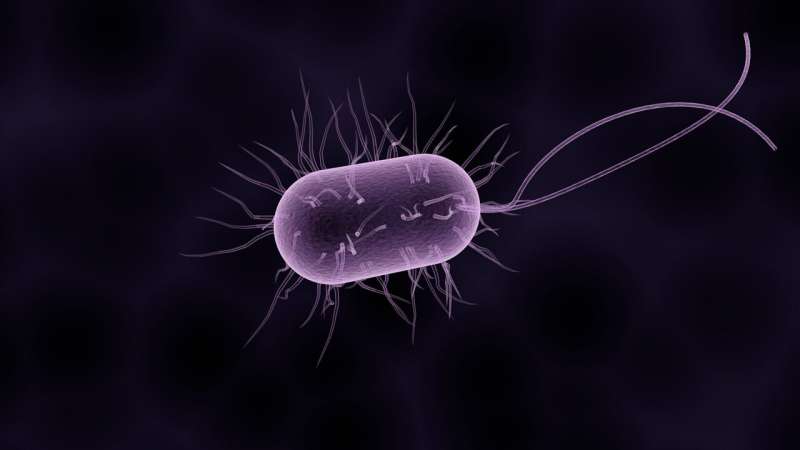Nitrogen-producing process of anammox bacterium finally uncovered

After years of research, the molecular structure of the enzyme responsible for a large part of the global nitrate and nitrogen production by bacteria has finally been uncovered. The anammox bacterium and other bacteria use this enzyme to convert toxic nitrite into nitrate. Now that the working of the enzyme has become clear, new possibilities have opened for the improved deployment of the anammox bacterium for power generation from wastewater and for the production of rocket fuel. Researchers from Radboud University and the Max Planck Institutes in Heidelberg and Frankfurt published a paper on the subject in Nature Microbiology today.
Nitrogen-consuming bacteria like the anammox bacterium require the nitrite oxidoreductase enzyme (NXR) to convert toxic nitrite into nitrate. The enzyme fulfills a central role in nature's nitrogen cycle. Significant amounts of ammonium end up in soil due to activities such as the use of fertilizers. The ammonium is subsequently converted into nitrate, which is water-soluble and therefore easily washes away into groundwater and surface water. This process forms an important part of the reason why too much nitrogen has such an environmental impact.
Complex molecule
"Despite the enzyme being such a vital part of the nitrogen cycle, we knew relatively little about how it worked," says Mike Jetten, professor of Ecological Microbiology at Radboud University. "It took us more than ten years to map the molecular structure of this enzyme in the anammox bacterium."
"NXR turns out to have a complex structure and contains unexpected parts," explains Thomas Barends of the Max Planck Institute for Medical Research in Heidelberg. "Together with our colleagues in Frankfurt, we found a building block that ensures the protein combines into long threads. We have also gained greater insight into the way proteins are able organize inside a cell in general."
Wastewater and rocket fuel
The knowledge of the inner working of NXR will help in the deployment of the anammox bacterium in interesting applications. Jetten: "Anammox requires this enzyme to grow, but it also grows slowly by nature. We might now be able to suppress the bottlenecks in the growing process, allowing for the application of the bacterium in smaller and faster installations."
Nijmegen microbiologists have long studied the properties of this unique anammox bacterium. It is the only known bacterium that is able to convert harmful ammonium into harmless nitrogen gas without requiring oxygen in the process. Since its discovery, anammox has been widely used for wastewater treatment.
A year ago, the microbiologists discovered that the bacterium can help to generate power from wastewater. "This—previously impossible—reaction was made possible by circumventing the NXR enzyme. Another point on our bucket list is to have anammox produce rocket fuel on a large scale. To achieve this, we will need to know how to circumvent the enzyme even more efficiently: this will cause the bacterium to focus less of growth and more on the synthesis of the by-product hydrazine, one of the compounds used in liquid rocket fuel."
More information: Structural and functional characterization of the intracellular filament-forming nitrite oxidoreductase multiprotein complex, Nature Microbiology (2021). DOI: 10.1038/s41564-021-00934-8, www.nature.com/articles/s41564-021-00934-8
Journal information: Nature Microbiology
Provided by Radboud University Nijmegen




















